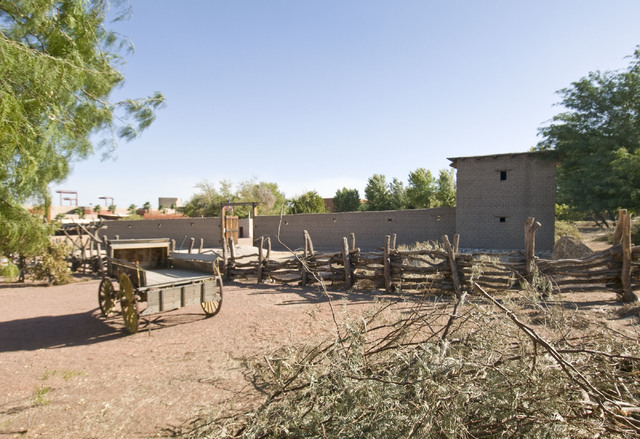Retrace historic footsteps along Old Spanish Trail

Travelers along some of Nevada’s major highways follow the historic footsteps of centuries-old trails. Head north into Utah on Interstate 15, or west into Red Rock Canyon National Conservation Area and over the mountains into Pahrump Valley, and you retrace part of the Old Spanish Trail, the oldest transportation corridor in the state.
Retraced and marked in 1964 for Nevada’s centennial, 152 miles of the transcontinental route run through Southern Nevada. There are places along the trail where ruts left by wagons crossing the desert or climbing steep grades can still be seen. The Nevada portion of the old route was listed as a historic district in the National Register of Historic Places in 2001.
In the early days of the United States, Nevada’s remote distances remained unmapped, known only to native cultures. Then controlled by the Spanish, the region lay beyond the reach of several exploratory expeditions they sent out. The Spanish sought overland routes to link interior settlements with those along the coastline. To control foreign expansion, the Spanish kept a tight grip on trade for about 200 years.
Things began to change in 1821, when a newly independent Mexico opened trade with other countries, including the United States. Meanwhile, English and American trappers and traders followed rivers and streams westward, seeking the pelts of beavers and other animals. In 1826, trapper and trader Jedediah Smith followed the Colorado River across the tip of Southern Nevada. The first American to approach from the east, Smith charted a path to Mexican California.
During the winter of 1829-30, Antonio Armijo, a Mexican trader from Santa Fe blazed the first overland route to California. He led 60 men and a pack train loaded with woolen goods to trade for horses and mules 1,120 miles to California. He used a network of old trails heading north to avoid the Grand Canyon and other chasms and then southwest. Armijo’s route entered Nevada near Mesquite, climbed up from the Virgin River to cross Mormon Mesa, then dropped into the Moapa area for the last water for 50 miles, the longest waterless stretch of the trail.
While the party recovered at a desert oasis, young Rafael Rivera dubbed the place Las Vegas. The traders headed west toward the mountains where they found water in nearly every red sandstone canyon. Their trail linked a series of springs south to the Mojave River, then through Cajon Pass to reach haciendas in the San Gabriel Valley.
In 1830-31, traders William Wolfskill and George Yount followed Armijo’s route, the first Americans to traverse the trail across Southern Nevada. Various offshoots of Armijo’s route developed over time, collectively called the Old Spanish Trail. Despite its length and hardships, the trail was busy with legitimate traders as well as rustlers and slave traders who raided native villages.
John C. Fremont followed the Old Spanish Trail east from California in 1844, mapping available water and pasture. Published soon after his return to the States, Fremont’s maps and notations assisted future travelers, including the Mormon Battalion that marched from Utah to California and returned in 1847-48. When the group returned to Utah, it drove the first wagon on the trail. The 1849 California Gold Rush increased travel on the trail, which was widened and improved for wagon traffic.
Learn more about the old trail during a visit to the Old Mormon Fort on Washington Avenue, site of the first nonnative settlement in Southern Nevada, established in 1855. Trace the history of the trail in a small urban park on Tara Avenue south of Sahara Avenue where wagons on the old route left ruts across a desert flat.
The portion of the trail across Nevada carried so much traffic between Utah and California that it was known as the Mormon Road. With the arrival of motorized vehicles in the early 1900s, the old route was adapted for new uses. The Mormon Road was renamed the Arrowhead Highway, then U.S. Highway 91 and later Interstate 15.
Margo Bartlett Pesek’s column appears on Sundays.